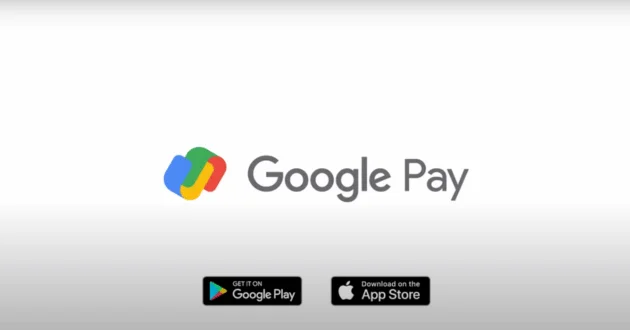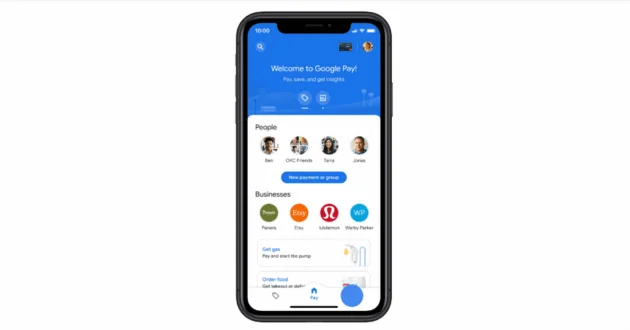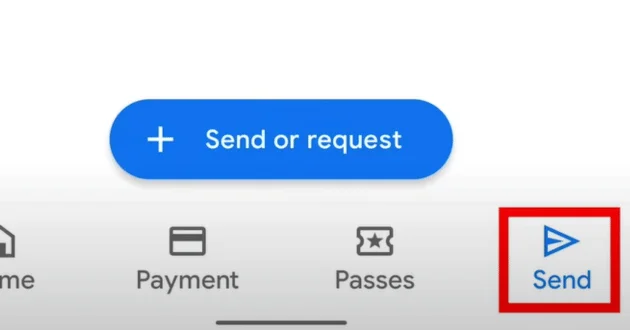
In today’s digital age, mobile payment solutions have become increasingly popular. One such solution is Google Pay, a secure and convenient way to make payments using your Android device. In this blog post, we will provide you with a detailed guide on how to use Google Pay effectively for various transactions, including making purchases at retail stores, sending money to friends and family, and paying bills online.
In this comprehensive guide, we will cover everything you need to know about Google Pay. From setting up the app on your Android device to adding payment methods, making payments at retail stores, sending money to friends and family, paying bills online, and even troubleshooting common issues, we’ve got you covered. So, let’s dive in!
Setting Up Google Pay
To start using Google Pay, you need to set it up on your Android device. Here’s how:
Step 1: Download Google Pay
Go to the Google Play Store on your Android device and search for “Google Pay.” Download and install the app.
Step 2: Sign In or Create an Account
Once the app is installed, open it and sign in with your Google account. If you don’t have an account, you can create one by following the on-screen instructions.
Step 3: Set Up a Screen Lock
For added security, set up a screen lock on your device. This can be a PIN, pattern, or fingerprint lock. Google Pay requires a screen lock to ensure that only authorized users can access your payment information.
Step 4: Add Your Bank Account
To link your bank account with Google Pay, follow the prompts in the app to add your bank account details. This step may require you to verify your identity and provide additional information as per your bank’s requirements.
Setting up Google Pay is quick and straightforward. Once you’ve completed these steps, you’re ready to start using the app.

Adding Payment Methods
Once you have set up Google Pay, you can add various payment methods for making transactions. Here are the options available:
Debit or Credit Cards
To add a debit or credit card, follow these steps:
- Open the Google Pay app.
- Tap on the “+” icon to add a new payment method.
- Select “Credit or debit card.”
- Follow the on-screen instructions to enter your card details manually or scan your card using your device’s camera.
Adding your debit or credit card to Google Pay allows you to make seamless payments without carrying your physical cards.
Bank Accounts
To add a bank account, follow these steps:
- Open the Google Pay app.
- Tap on the “+” icon to add a new payment method.
- Select “Bank account.”
- Enter your bank account details, such as account number and routing number.
- Follow any additional verification steps required by your bank.
Linking your bank account with Google Pay enables you to make direct transfers and enjoy the convenience of easy access to funds.
PayPal Integration
Google Pay also allows you to link your PayPal account for seamless transactions. To add PayPal as a payment method:
- Open the Google Pay app.
- Tap on the “+” icon to add a new payment method.
- Select “PayPal.”
- Sign in to your PayPal account and follow the on-screen instructions to link it with Google Pay.
Integrating PayPal with Google Pay gives you more flexibility in choosing your preferred payment method.
Adding multiple payment methods ensures that you always have alternative options available when making transactions through Google Pay.
Making Payments at Retail Stores
Using Google Pay for in-store purchases is quick and easy. Here’s how:
Step 1: Look for Contactless Payment Symbol
When you’re ready to make a purchase at a retail store, look for the contactless payment symbol at the checkout counter. It typically looks like a Wi-Fi symbol with curved lines.
The contactless payment symbol indicates that the store accepts mobile payments, including Google Pay.
Step 2: Unlock Your Device
Unlock your Android device using your screen lock method (PIN, pattern, or fingerprint).
Before making a payment using Google Pay, ensure that your device is unlocked and ready for use.
Step 3: Hold Your Device Near the Payment Terminal
Hold your unlocked device near the payment terminal, ensuring that it is within close proximity for communication.
Google Pay uses near-field communication (NFC) technology to establish a connection between your device and the payment terminal.
Step 4: Complete the Transaction
Once your device is detected by the payment terminal, your default payment method in Google Pay will be selected. If you have multiple payment methods, you may need to choose the appropriate one on your device screen.
Follow any additional prompts or instructions on both the payment terminal and your device screen to verify and complete the payment.
Step 5: Verify the Payment
After completing the transaction, you may receive a notification on your device confirming the successful payment.
Making payments at retail stores with Google Pay offers convenience and eliminates the need to carry physical cards or cash.

Sending Money to Friends and Family
Google Pay makes it easy to send money to friends and family quickly. Here’s how you can do it:
Step 1: Open Google Pay App
Launch the Google Pay app on your Android device.
Ensure that you have a working internet connection to access the app and initiate money transfers.
Step 2: Tap on “Send”
Tap on the “Send” button located at the bottom of the screen.
The “Send” button allows you to initiate money transfers through Google Pay.
Step 3: Enter Recipient’s Details
Enter the recipient’s phone number or email address associated with their Google account. You can also select recipients from your existing contacts list.
Providing accurate recipient details ensures that the money is sent to the intended recipient without any issues.
Step 4: Enter Amount and Description
Specify the amount you want to send and add an optional description to accompany the transaction.
Adding a description can help both you and the recipient identify the purpose of the transaction.
Step 5: Choose Payment Method
Select the payment method you want to use for the transaction (e.g., debit/credit card, bank account, or PayPal).
Choose the appropriate payment method based on your preferences and availability of funds.
Step 6: Review and Send
Review all the details of the transaction, including recipient information and payment method, before tapping on the “Send” button to initiate the transfer.
Double-checking all the details ensures that there are no errors or discrepancies in the transaction.
Sending money through Google Pay is a convenient way to split bills or send funds to friends and family without needing cash or physical checks.
Paying Bills Online
Google Pay allows you to conveniently pay bills online without needing multiple websites or apps for different billers. Follow these steps:
Step 1: Open Google Pay App
Launch the Google Pay app on your Android device.
Make sure that you have a stable internet connection before proceeding with bill payments.
Step 2: Tap on “Pay Bills”
Tap on the “Pay Bills” option located on the home screen of the app.
The “Pay Bills” option provides access to various billers and service providers integrated with Google Pay.
Step 3: Search for Biller or Service Provider
Enter the name of your biller or service provider in the search bar provided. Google Pay has a wide range of billers available.
The search function helps you quickly locate your specific biller or service provider within the app.
Step 4: Add Account Details
Enter your account details for that particular biller or service provider. This may include your customer ID, account number, or other relevant information.
Providing accurate account details ensures that your payment is correctly applied towards your bill or service.
Step 5: Verify and Confirm Payment
Review all the details of the bill payment, including amount due and due date, before tapping on the “Pay” button to proceed with the transaction.
Verifying all information ensures that you are paying the correct amount towards your bill or service.
Paying bills through Google Pay simplifies the process by consolidating multiple billers into a single platform, saving you time and effort.
Google Pay Rewards and Offers
Google Pay offers various rewards and cashback offers that can enhance your overall experience. Here are some ways to take advantage of these benefits:
Cashback Offers
Keep an eye out for cashback offers available through Google Pay at participating merchants. These offers can provide discounts or cashback rewards when you make eligible purchases using Google Pay.
Cashback offers allow you to save money or earn rewards while making everyday purchases through Google Pay.
Scratch Cards and Rewards Points
Google Pay provides virtual scratch cards that can be earned when you make transactions or participate in promotional activities. Scratch these cards to reveal rewards such as cashback, vouchers, or other exciting prizes.
Scratch cards add an element of surprise and can offer additional benefits beyond regular cashback offers.
Loyalty Programs Integration
Some businesses allow you to integrate their loyalty programs with Google Pay. This means you can earn loyalty points or enjoy exclusive discounts by simply using Google Pay for transactions at those specific merchants.
Integrating loyalty programs with Google Pay consolidates rewards from different merchants into a single platform, making it easier for you to track and redeem rewards.
Taking advantage of rewards and offers provided by Google Pay enhances your overall experience while using the app and can help you save money in various ways.
Keeping Your Transactions Secure
While using any digital payment method, including Google Pay, it’s crucial to prioritize security. Here are some tips to keep your transactions secure:
Regularly Update Your Device and Apps
Ensure that both your Android device’s operating system and the Google Pay app are up-to-date with the latest security patches and bug fixes.
Regular updates help protect against known vulnerabilities and ensure that you have access to the latest security features.
Enable Biometric Authentication
Whenever possible, enable biometric authentication (e.g., fingerprint or face recognition) for unlocking your device and authorizing transactions within Google Pay.
Biometric authentication adds an extra layer of security by requiring physical verification before accessing sensitive information or completing transactions.
Set Transaction Limits and Notifications
Take advantage of features like transaction limits and notifications offered by Google Pay to stay informed about any suspicious activities or unauthorized
transactions. Set transaction limits to control the maximum amount that can be spent using Google Pay in a single transaction. This can help prevent potential financial loss in case of unauthorized transactions.
Enabling notifications allows you to receive real-time alerts on your device whenever a transaction is made using Google Pay. This way, you can quickly identify any suspicious activity and take immediate action.
Use Strong and Unique Passwords
When creating an account or setting up payment methods within Google Pay, make sure to use strong and unique passwords. Avoid using easily guessable or commonly used passwords to minimize the risk of unauthorized access to your account.
Using a password manager can help generate and store complex passwords securely, ensuring that you don’t reuse passwords across multiple accounts.
Be Cautious with Personal Information
Google Pay requires you to provide certain personal information, such as your name, phone number, and payment details. It’s essential to be cautious with this information and only provide it on secure and trusted platforms.
Avoid sharing sensitive information, such as your payment card’s CVV or PIN, via email or messaging apps. Be vigilant against phishing attempts or fraudulent requests for personal information.
Enable Two-Factor Authentication
Consider enabling two-factor authentication (2FA) for your Google account. This adds an extra layer of security by requiring a verification code or prompt in addition to your password when signing in to your account.
With 2FA enabled, even if someone manages to obtain your password, they would still need the additional verification factor to access your Google Pay account.
Keep an Eye on Your Transactions
Regularly review your transaction history within the Google Pay app to ensure that all transactions are authorized and familiar. If you spot any suspicious or unrecognized transactions, report them immediately to the appropriate authorities and contact Google Pay support for assistance.
By actively monitoring your transactions, you can quickly detect and mitigate any unauthorized activities.
Troubleshooting Common Issues
While Google Pay strives to provide a seamless payment experience, you may encounter some common issues along the way. Here are a few troubleshooting tips:
Check Internet Connectivity
Ensure that you have a stable internet connection before using Google Pay. Poor connectivity can lead to transaction failures or delays.
If you’re experiencing connectivity issues, try switching to a different network or connecting to a Wi-Fi network for a more reliable connection.
Update Google Pay App
Regularly check for updates to the Google Pay app and install them as they become available. Updates often include bug fixes and performance improvements that can resolve common issues.
Updating the app ensures that you have the latest features and enhancements for a smoother payment experience.
Clear Cache and Data
If you’re encountering frequent issues with Google Pay, clearing the app’s cache and data can sometimes help resolve them. This action refreshes the app’s settings and can eliminate any temporary glitches.
To clear the cache and data, go to your device’s Settings > Apps > Google Pay > Storage > Clear Cache/Clear Data. Note that clearing data will remove any stored payment methods or transaction history, so make sure to backup any important information before proceeding.
Contact Google Pay Support
If you’re unable to resolve an issue on your own, don’t hesitate to reach out to Google Pay support for assistance. They have dedicated customer support channels available, including live chat, email, and phone support.
Provide them with detailed information about the problem you’re facing, and they will guide you through the troubleshooting process.
Remember, staying patient and seeking assistance when needed can help overcome any challenges you may encounter while using Google Pay.
Conclusion
Google Pay is a versatile mobile payment solution that offers convenience and security for various transactions. From making payments at retail stores to sending money to friends and family, paying bills online, and taking advantage of rewards and offers, Google Pay simplifies your financial transactions.
By following the steps outlined in this comprehensive guide and implementing the security tips provided, you can confidently use Google Pay to manage your payments efficiently. Embrace the digital age of payments with Google Pay and enjoy its many benefits!
Read more:


